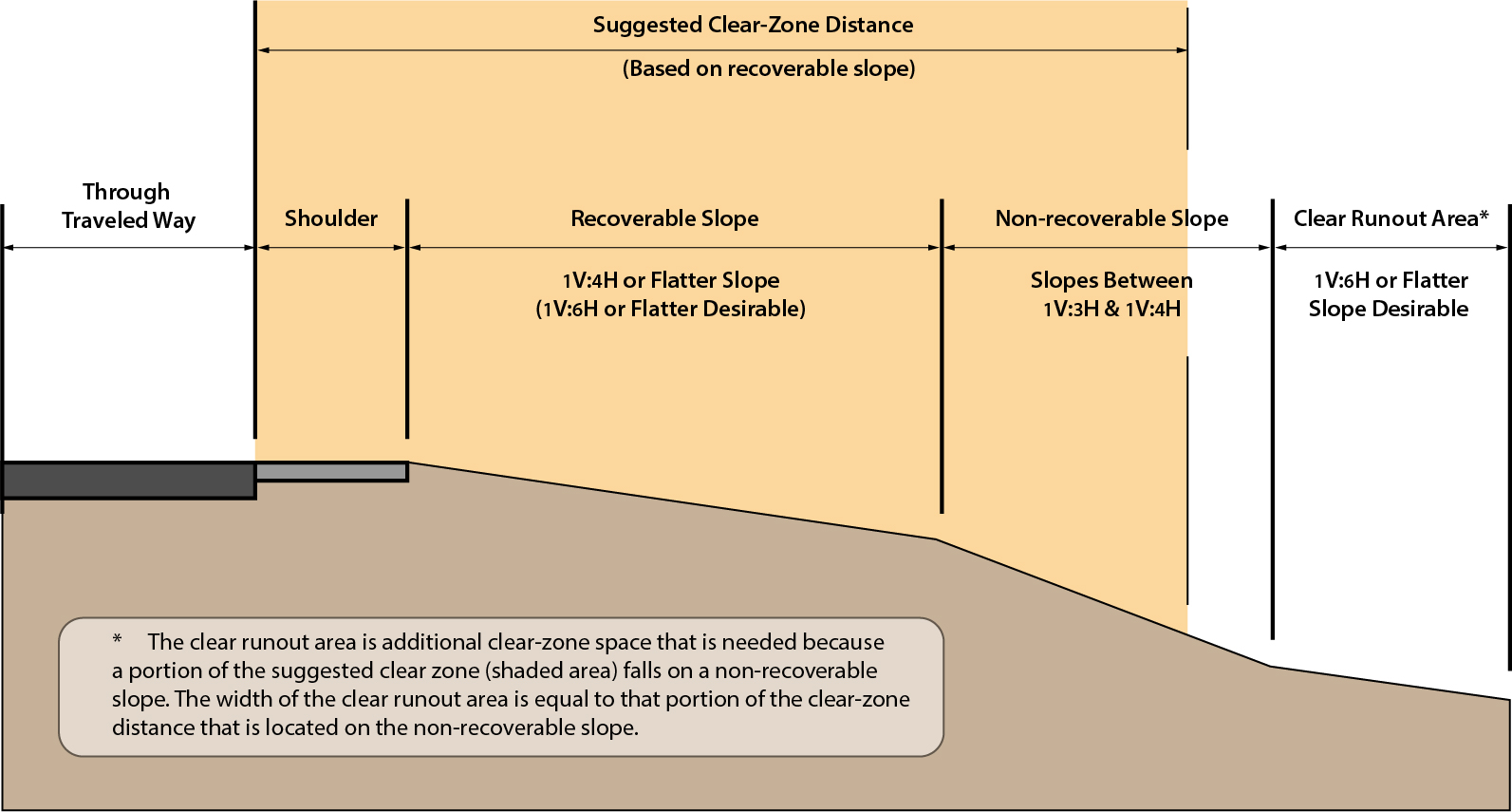

Search for articles or browse our knowledge portal by topic.
Contents
Clear zone guidelines are most applicable for new construction. On other project types, project context and the existing roadside’s safety performance should be considered when applying clear zone concepts. Although the clear zone is not a controlling design criterion, it should be considered during highway project development and is documented in the Design Executive Summary (DES) with other engineering decisions related to the project.
Traversable, non-recoverable foreslopes with grades from 3:1 up to 4:1 should have a clear runout area beyond the toe of the foreslope. The width of a non-recoverable foreslope is not included in the clear zone distance. To give errant vehicles a chance to recover, the width of the recovery area should be the clear runout area needed to complete the clear zone distance or encompass an area at least 10 ft wide with slope of 6:1 or flatter (if practical).
Figure 2-1: Clear Zone for Non-Recoverable Parallel Foreslope

Source: RDG Figure 3-2
Bear the following considerations in mind when establishing clear zone distances for variable slopes:
Figure 2-2: Rock Cut Example with Smooth Redirection

If an auxiliary lane does not function as a through lane (e.g., speed-change lanes on freeways), a separate clear zone is unnecessary. However, if an auxiliary lane operates as a through lane, the clear zone distance should be the larger of the following:
Figure 3-1: Clear Zone for Auxiliary Lane

For ramps, the suggested clear zone distance is based on the ramp’s speed, traffic volumes, horizontal curvature, and roadside geometry. The design speed should be determined from the ramp design and is typically 0.7 times the mainline design speed. When compound and reverse curves are used, the clear zone distance recommended for the higher speed curve (excluding transition curves) may be used for the entire ramp. For complex ramps with multiple radii and variable operating speeds, a separate clear zone distance may be determined for each unique ramp segment. Alternately, ramp clear zones may be set at 30 ft if the performance of similar projects or designs has been satisfactory.